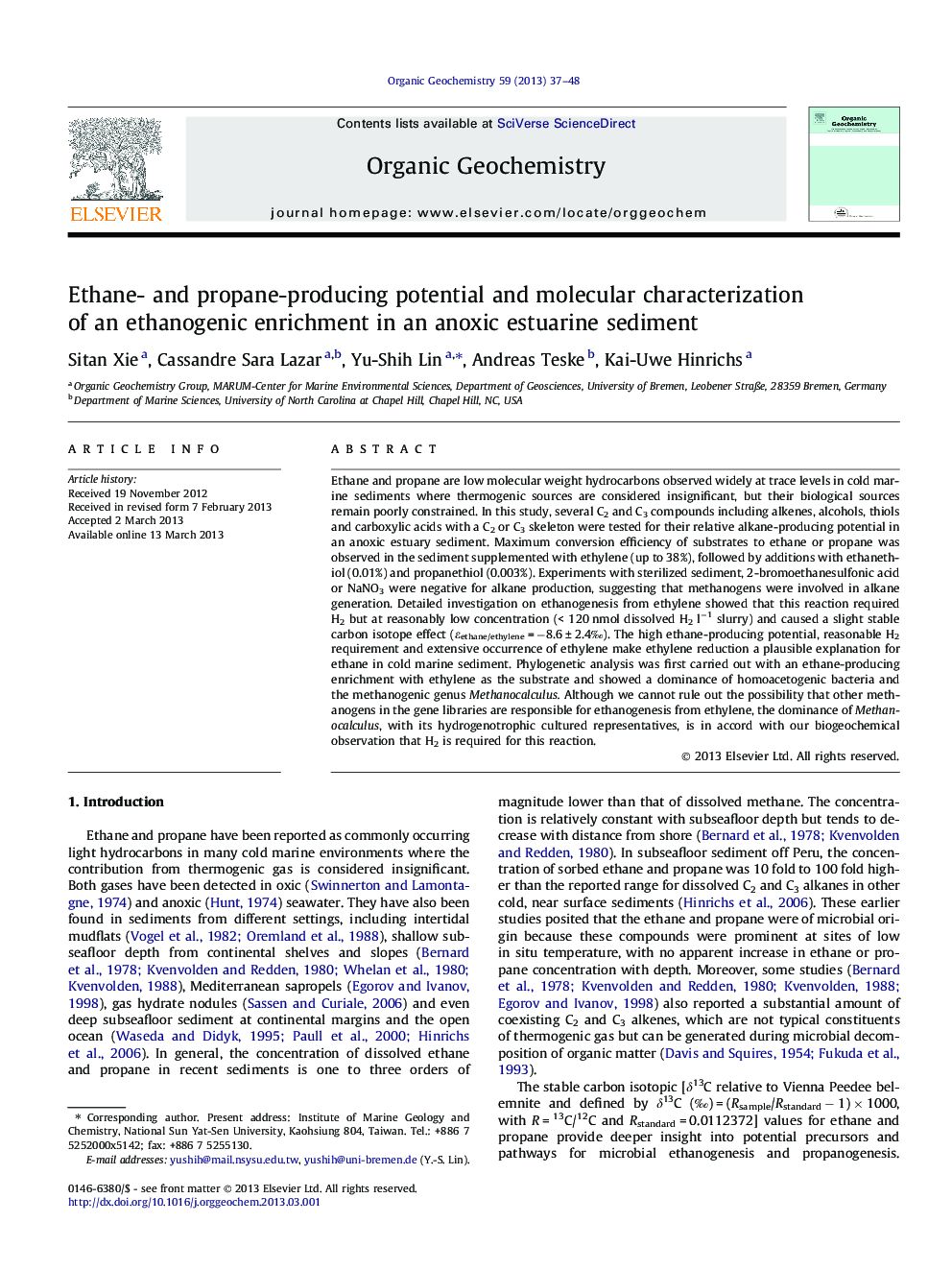| کد مقاله | کد نشریه | سال انتشار | مقاله انگلیسی | نسخه تمام متن |
|---|---|---|---|---|
| 5162453 | 1502302 | 2013 | 12 صفحه PDF | دانلود رایگان |
عنوان انگلیسی مقاله ISI
Ethane- and propane-producing potential and molecular characterization of an ethanogenic enrichment in an anoxic estuarine sediment
ترجمه فارسی عنوان
پتانسیل تولید اتان و پروپان و خصوصیات مولکولی غنی سازی اتانولی در یک رسوب رسوبی
دانلود مقاله + سفارش ترجمه
دانلود مقاله ISI انگلیسی
رایگان برای ایرانیان
موضوعات مرتبط
مهندسی و علوم پایه
شیمی
شیمی آلی
چکیده انگلیسی
Ethane and propane are low molecular weight hydrocarbons observed widely at trace levels in cold marine sediments where thermogenic sources are considered insignificant, but their biological sources remain poorly constrained. In this study, several C2 and C3 compounds including alkenes, alcohols, thiols and carboxylic acids with a C2 or C3 skeleton were tested for their relative alkane-producing potential in an anoxic estuary sediment. Maximum conversion efficiency of substrates to ethane or propane was observed in the sediment supplemented with ethylene (up to 38%), followed by additions with ethanethiol (0.01%) and propanethiol (0.003%). Experiments with sterilized sediment, 2-bromoethanesulfonic acid or NaNO3 were negative for alkane production, suggesting that methanogens were involved in alkane generation. Detailed investigation on ethanogenesis from ethylene showed that this reaction required H2 but at reasonably low concentration (< 120 nmol dissolved H2 lâ1 slurry) and caused a slight stable carbon isotope effect (εethane/ethylene = â8.6 ± 2.4â°). The high ethane-producing potential, reasonable H2 requirement and extensive occurrence of ethylene make ethylene reduction a plausible explanation for ethane in cold marine sediment. Phylogenetic analysis was first carried out with an ethane-producing enrichment with ethylene as the substrate and showed a dominance of homoacetogenic bacteria and the methanogenic genus Methanocalculus. Although we cannot rule out the possibility that other methanogens in the gene libraries are responsible for ethanogenesis from ethylene, the dominance of Methanocalculus, with its hydrogenotrophic cultured representatives, is in accord with our biogeochemical observation that H2 is required for this reaction.
ناشر
Database: Elsevier - ScienceDirect (ساینس دایرکت)
Journal: Organic Geochemistry - Volume 59, June 2013, Pages 37-48
Journal: Organic Geochemistry - Volume 59, June 2013, Pages 37-48
نویسندگان
Sitan Xie, Cassandre Sara Lazar, Yu-Shih Lin, Andreas Teske, Kai-Uwe Hinrichs,
